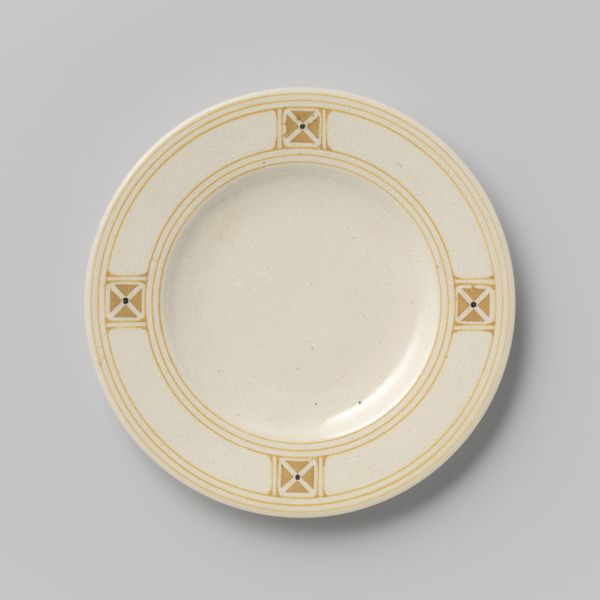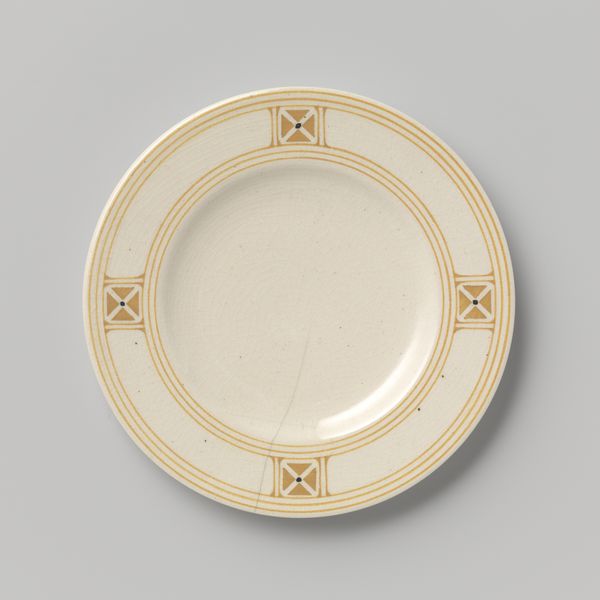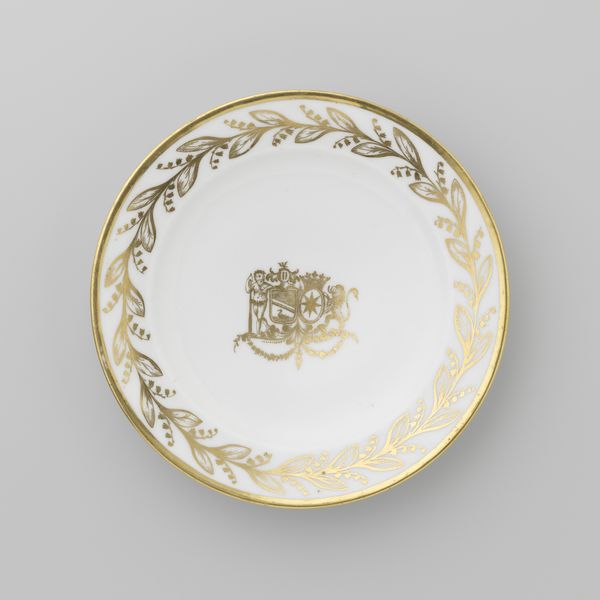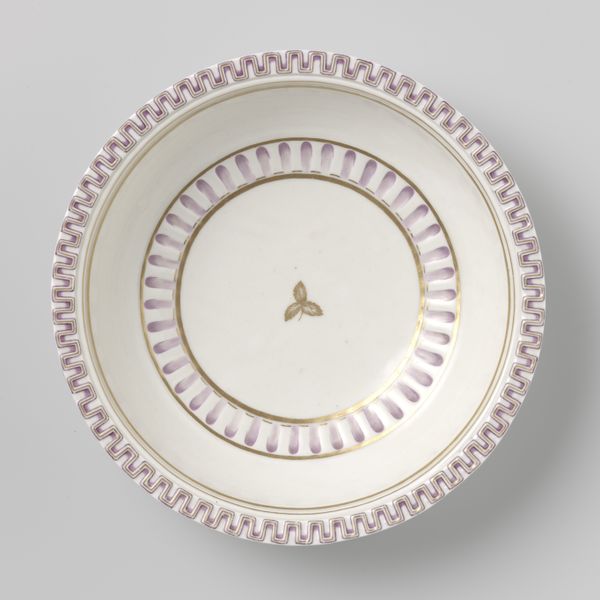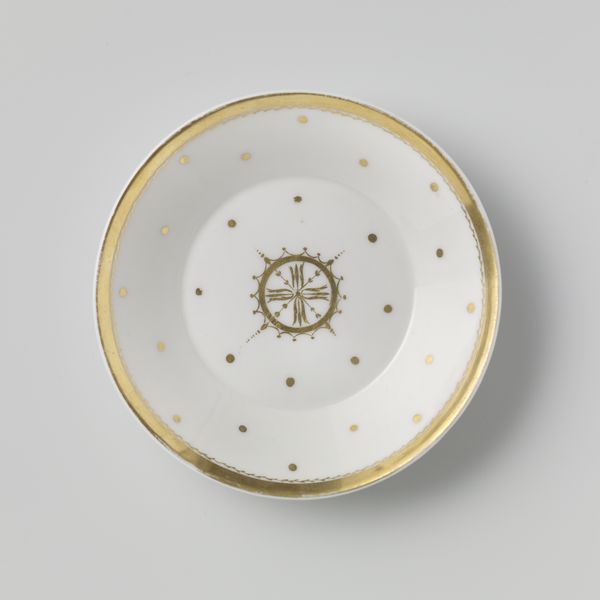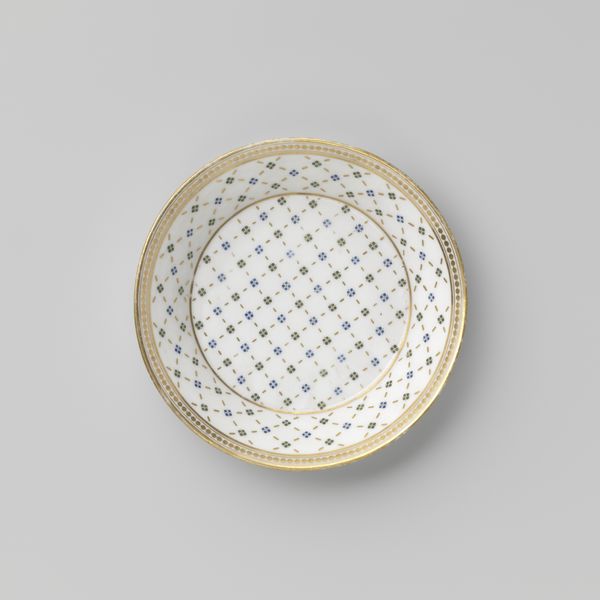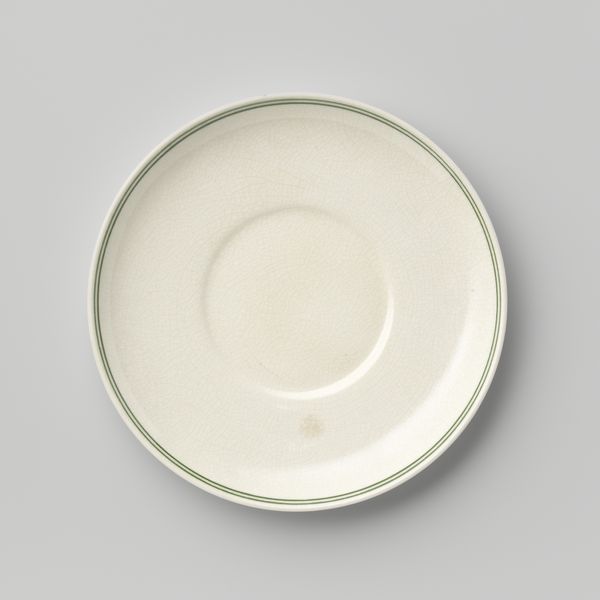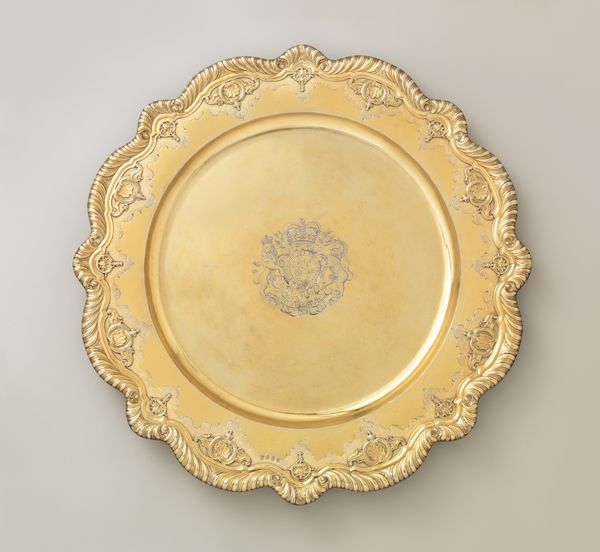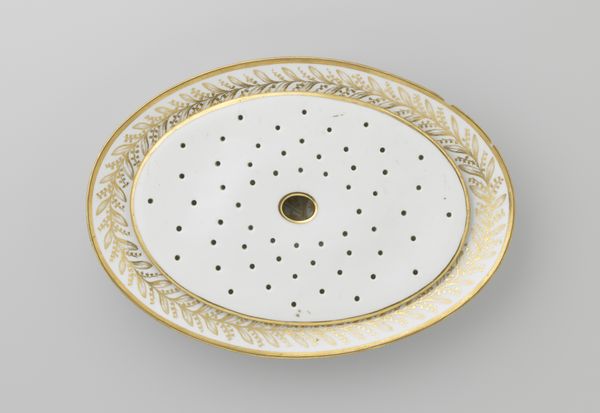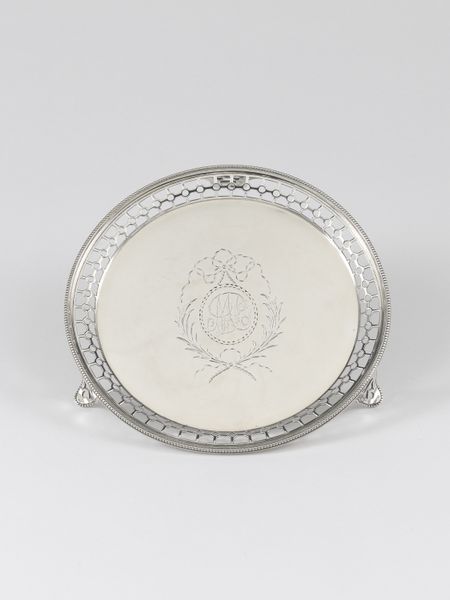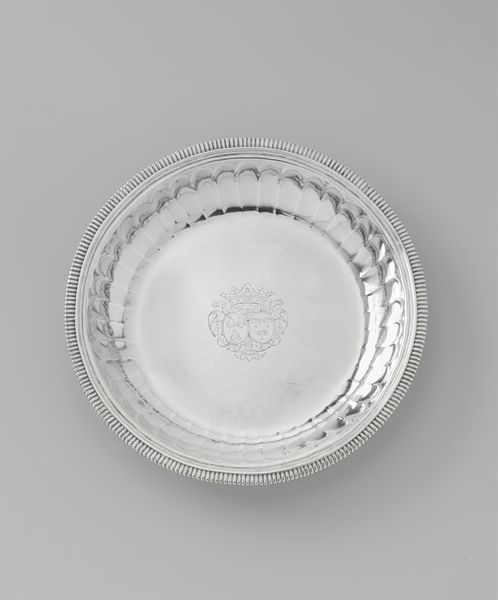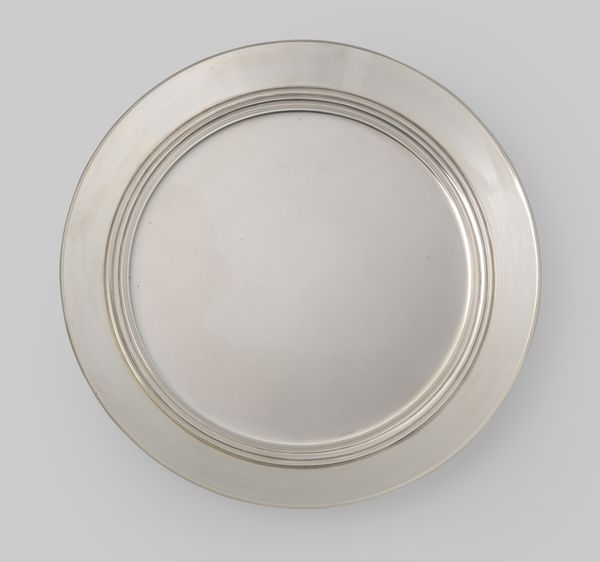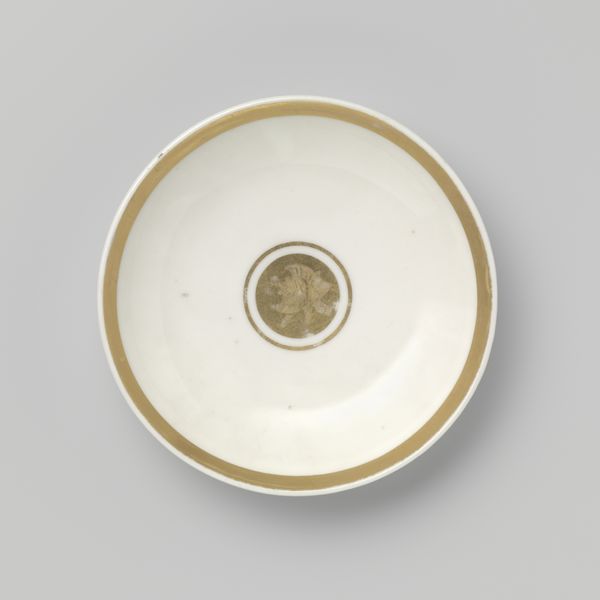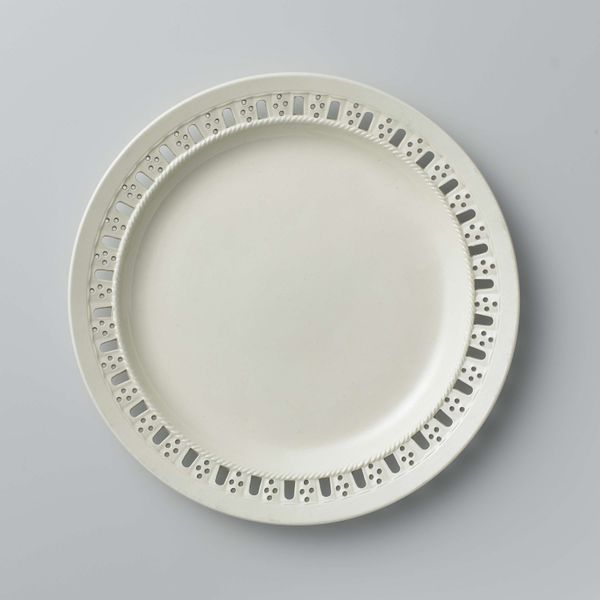
Gebakschotel versierd met blokmotief en stippen in geel en zwart c. 1900 - 1925
0:00
0:00
chrisvanderhoef
Rijksmuseum
ceramic, earthenware
#
product photograph merchandise
#
product studio photography
#
circular oval feature
#
art-nouveau
#
product promotion photography
#
product photography advertising
#
product fashion photography
#
lifestyle product photography
#
ceramic
#
earthenware
#
geometric
#
metallic object render
#
graphic design product photography
#
product photography
#
decorative-art
Dimensions: height 1.5 cm, diameter 13.0 cm
Copyright: Rijks Museum: Open Domain
Curator: Immediately striking! Its simplicity draws you in; it feels almost austere yet subtly inviting at the same time. Editor: Here we have a ceramic earthenware plate crafted between 1900 and 1925, its proper title is "Gebakschotel versierd met blokmotief en stippen in geel en zwart"—or, a pastry plate decorated with block patterns and dots in yellow and black, made by Chris van der Hoef. Curator: It’s clearly decorative, beyond purely functional, although you could serve pastries on it. It’s hinting at class, perhaps the bourgeois ritual of afternoon tea… And the geometric pattern appeals to my understanding of a burgeoning visual and social dynamic! Editor: Absolutely. Consider the production process. The standardization implied by geometric patterns highlights an interest in industrialized methods, potentially even mass production within a changing socio-economic landscape of the Netherlands. Earthenware made accessible artistry to a broader public! Curator: This intersection becomes interesting when we consider women's domestic labor during this time. Who was setting this table? Were they afforded any other spaces for self-expression or were their identities inherently confined to these spaces of labour and how might this decorative plate complicate such narratives? Editor: Good questions. The yellow and black also provide interesting material cues, pigments requiring skilled application—likely indicating a separation of design and creation processes. Its aesthetic is also speaking to consumption; what kind of household invested in stylized tableware? It opens inquiry to class and wealth as they influence artistic expression. Curator: Agreed, and these block motifs become coded markers of identity and aspiration. Were they appropriating other cultures as was very common in western societies at the time and therefore performing a social currency of worldly knowledge? Or a nascent awareness of global aesthetics entering Dutch homes and impacting notions of good taste, so it becomes more than merely an art object. Editor: Indeed, the choice of design, even something this simple, becomes intertwined with ideas about value and meaning! It really does provoke us to think of design not just in formal but social, industrial and individual contexts! Curator: So we witness not simply a plate, but a charged site— a meeting ground of domestic performance, identity, and historical forces. Thank you, this ceramic witness opens doors to broader and more critical questions than it seems capable of holding! Editor: An ordinary thing which offers insights into the complex machinery that produced the object and produced society around it! A rich tableau.
Comments
No comments
Be the first to comment and join the conversation on the ultimate creative platform.
